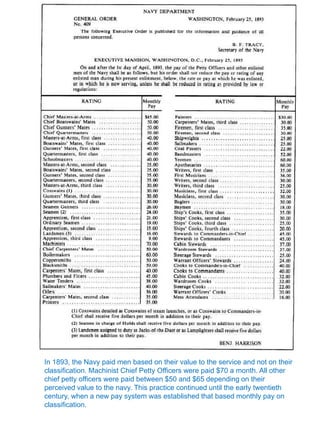409
- 1. In 1893, the Navy paid men based on their value to the service and not on their classification. Machinist Chief Petty Officers were paid $70 a month. All other chief petty officers were paid between $50 and $65 depending on their perceived value to the navy. This practice continued until the early twentieth century, when a new pay system was established that based monthly pay on classification.
- 2. On March 13, 1893, U.S. Navy Regulation Circular No. 1 established the classification of Chief Petty Officer. Initially, only eight ratings were included in the chief petty officer classification.
- 3. 1893 Chief Master at Arms rating badge for white clothing. This style was worn by Chief Master at Arms from 1893 through 1894. 1893-1894 Chief Petty Officer rating badge without a specialty mark for white clothing. A specialty mark was added depending on the rate. The eagle was white for blue clothing 1893 Rating Badges and Insignia for Chief Petty Officers 1893 Chief Petty Officer cap device worn by chief petty officers from 1893-1897. The same device was worn by first class petty officers prior to the establishment of the Chief Petty Officer rating in 1893.



